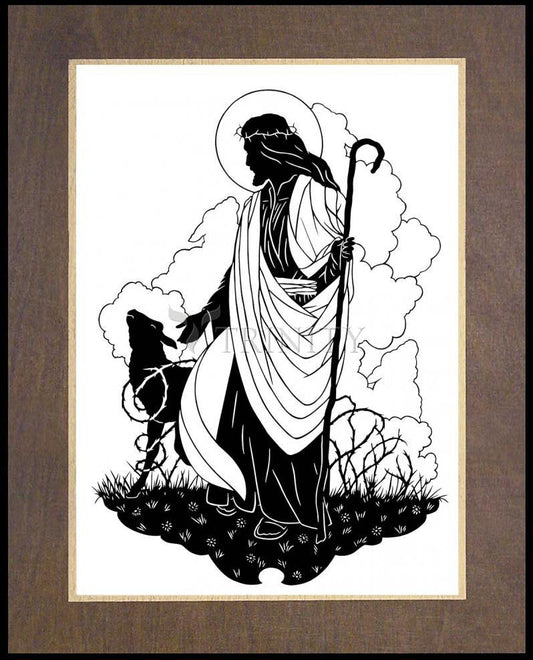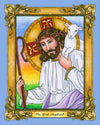THE SHEPHERD IN THE BIBLE
The picture of the shepherd is deeply woven into the language and imagery of the Bible.
Throughout the Bible period, the shepherd was a familiar figure of the JudÃan uplands.
The life of a Palestinian shepherd was very hard; indeed, it is so still. There is little grass, and its growth , where it does appear, is seasonal. Flocks must be for ever on the move to find it, and the edges of the plateau, only 35 miles long and 17 miles wide, dip away sharply into craggy desert land below. No flock may ever graze without a shepherd to watch it. The shepherd therefore was never off duty. His task was unremitting and dangerous: his sheep were prey to wolves, bears and lions in Bible times, to thieves and robbers, and in the wet season to flash floods and landslides.
Sir George Adam Smith wrote: "When you meet him, in some high place at night, sleepless, far-sighted, weather-beaten, leaning on his staff and looking out over his scattered sheep, wolf howls drifting on the wind in every direction, you understand why the shepherd of Judea sprang to the fore in his peoples' history; why he gave his name to their kings; why they made him the symbol of providence; and why Christ took him as the type of self-sacrifice."
Vigilant, fearless, patient, caring -- that was the shepherd of Bible times. He lived, not for himself but for his flock.God is often pictured in the Old Testament as a shepherd:
"The Lord is my shepherd, I shall not want." (Psalm 23:1)
"Give ear, O shepherd of Israel, Thou that leadest Joseph like a flock." (Psalm 80:1)
"He is our God, and we are the people of His pasture, the sheep of His hand." (Psalm 95:7)
"He shall feed His flock like a shepherd: He shall gather the lambs with His arm, and carry them in His bosom, and shall gently lead those that are with young." (Isaiah 40.11)
"Thus saith the Lord God: I, I myself will be the shepherd of my sheep, and I will make them to lie down. I will seek the lost ... and bring back the strayed ... and bind up the crippled and strengthen the weak; the fat and the strong I will watch over." (Ezekiel 34.15)
This picture carries over into the New Testament.
Jesus is the Good shepherd. (John 10:11)
He is the shepherd who will risk his life to seek and to save the one sheep that has strayed. (Matthew 8:12)
He has pity on the crowds because they are as sheep without a shepherd. (Matthew 9:36)
His disciples are His little flock. (Luke 12:32)
When He, the shepherd, is smitten the sheep are scattered. (Mark 14:27)
He is "the great shepherd of the sheep." (Hebrews 13:20)
We may easily miss the arresting significance of this. Familiarity with the image makes us forget that in applying it to Jesus of Nazareth the New Testament writers were ascribing divinity to Him. That He applied the language to Himself in a culture where the picture of the shepherd was an archetypal image of God was on His part, not a veiled, but an explicit claim to godhood.




















